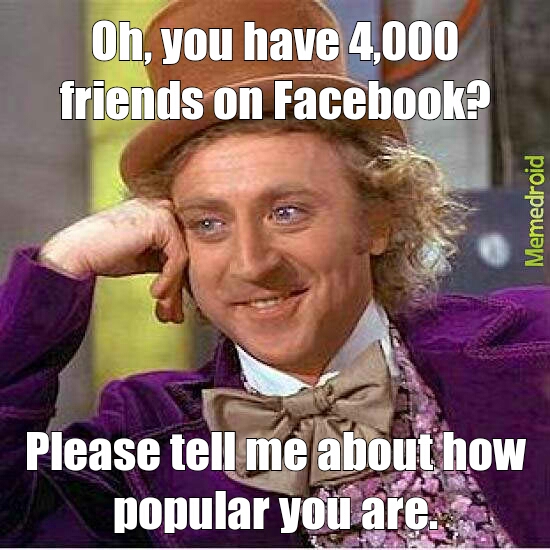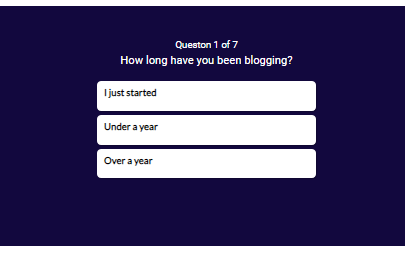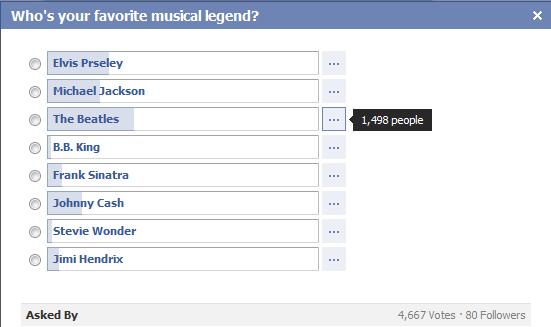You know what would be amazing:
If you could read minds...
... and figure out what made people tick as individuals.
How would your message be different if you knew what someone wanted..
...and WHY they wanted it?
That’s the information psychographic segmentation gives you.
It's almost like reading minds....
We’ve covered market segmentation which allows you to divide the world into groups that are likely to buy from you.
After that, we touched on demographic segmentation which helps you understand who people are as a group in society.
Today, we’re diving deep into psychographic segmentation which will shed light on the WHY behind the activities of your customer segments.
In short, it lets you know who they are as people as opposed to numbers on a screen.
Please note that this is different from behavioral segmentation because it deals with the rationale behind their actions instead of the actions themselves.
Featured Training:
This post goes deep into what psychographic segmentation is and you'll walk away with an understanding of how to use it. Our featured training is an email course that takes it further and gives you step-by step training to implement it in a specific funnel (which it shows you how to build).
Get access to the email course so you can start implementing psychographic segmentation in your business, increase engagement, and grow revenue faster.
What Is Psychographic Segmentation?
In a few words, psychographic segmentation is when you break your customer groups down into units as it pertains to their beliefs, values, and reasons for being.
It’s defined as:
The psychological aspects that influence consumer purchase behavior such as lifestyle, social status, opinions, and activities.
For example, because of their social standing, some families will refuse to by a Kia Rio. It doesn’t matter if it’s the perfect car for them; they wouldn’t be caught dead in it.
As the definition states, you’ll have a deep understanding of their:
- Lifestyle
- Social status
- Activities
- Opinions
- Interests
When you’ve done psychographic segmentation properly, you’re able to:
- Understand how your customers perceive your company and products
- Understand how your products fit into their life
- Reveal what they actually (not what you think) want to achieve
- Identify pain points related to your products
- Address objections people will have
Psychographic segmentation helps you position the same product differently for different types of people. It prevents you from falling into the trap of one size fits all marketing. It also makes it possible to attract a diverse group of customers with the same product without making material changes to it.
3 Psychographic segmentation factors
There are a few overarching factors to take into consideration. These aren’t written in stone and keep in mind that psychographic segmentation prevents you from generalizing too much.
Use the factors to inform your segmenting decisions. If you don’t feel like these factors apply or your customers don’t fit into a psychographic profile don’t force it.
Lifestyle Segmentation
The lifestyle of your target customer plays a huge role in whether or not your products will appeal to them.
For instance, if your target market includes families who enjoy weekend getaways, understanding their interest in RV sales could provide valuable insights into how your products can cater to their travel-centric lifestyle.
Diving into the world of psychographic segmentation is like peeling back layers of an onion – each reveal brings you closer to the core of your customer's psyche. It's not just about slapping labels on people; it's about understanding the nuances that make them tick.
Take lifestyle segmentation, for instance. It's the secret sauce that can turn a good marketing strategy into a great one.
For example, the clothes you wear are largely determined by your lifestyle choices. A college student will wear different shoes, shirts, and pants from a C level executive. They’ll use different types of gadgets, eat in different places, and find other things “fun.”
This is as a direct result of the lifestyle they’ve chosen. To get a real understanding of your customers, analyze the most important dimensions of their life.
Those dimensions are known as the AIO variables (activities-interests-opinions)
Opinions
We all hold opinions whether that’s about politics or global warming. These are determined by our beliefs (cultural and religious) and by how much it affects us.
I have an opinion on the oil pipelines being drilled across America but it’s not as important to me as the communities through which the pipeline passes.
Conversely, my opinion about the curriculum used to educate my son is much stronger.
Opinions form the lenses through which people look at new products and services before they even evaluate it. If someone hates Dell computers then it doesn't matter how well you design the latest model, they won't buy it.
Apart from the products, opinions will also affect your audience's comfort level on how you communicate. Some might find your website copies to be sufficient sources of information. Others, on the other hand, might prefer to read blogs that feature real people and testimonials before you can earn their trust.
Opinions cover:
- Themselves
- Social issues
- Political issues
- Business
- Economics
- Education
- Products
- Services
It’s important to note that opinions can be formed based on facts and logical assessments or rhetoric and personal anecdotes. The end result is the same. It’s difficult to get someone to change their opinion.
Interests
Interest is the degree of engagement people have with something. How interested or disinterested is someone with a certain thing?
How interested or disinterested are you in family, work, your community, etc. With interest profiling, it’s easier to go broad before going narrow. That way, you can ensure you don’t miss important insights.
For example, you may find out that a segment of your customers like sports. After that, you drill deeper and find out they like mountain climbing. Not just any type of mountain climbing, they prefer free climbing.

Once you have this information, you can make informed decisions about what to sell. They don’t need the traditional ropes because they’re free form but they could still use climbing shoes and helmets.
Interests cover:
- Family
- Home
- Job
- Community
- Recreation
- Fashion
- Food
Activities
This one is straightforward. What does someone’s day to day look like? What are their common behaviors? In addition to that, what activities do they perform occasionally but have a high level of engagement with?
When thinking about and defining activities to build a psychographic profile, there are a number of things to take into consideration:
- How often do they engage in the activity?
- Is the activity required (for work, school, memberships, etc.)
- Do they spend money on the activity?
- How deeply engaged are they in the activity (you can use a Likert scale to assess this).
The activities they engage in during their free time can reveal a wealth of insight. Someone who climbs mountains on the weekends is going to need to buy a lot of gear and supplies to pursue their hobby. They’ll buy ropes, harnesses, packs, helmets, climbing shoes, etc.
A person who lives a more sedentary lifestyle may spend more money (and effort) on entertainment such as the movie theaters or high-end televisions.
Activities cover:
- Work
- Hobbies
- Social events
- Vacations
- Club memberships
- Community
- Entertainment
Learn the Secrets of Effective Segmentation

They’re all tied together
Each of the elements of lifestyle builds upon one other. They don’t exist in a vacuum. Your opinions will inform your interests and your interests will determine the types of activities you participate in.
What does that mean for your business?
What likely happens is a person has already formed an opinion about something before your business every came into their life.
That opinion may be good or bad. Depending on what their opinion is – they’ll begin to seek more information about it. This is where they’re showing interest.
If their interest is sustained they’ll perform an action that may turn into a consistent activity. Does this process sound familiar to you?
It’s just like the customer journey. Your job is to move them through each of the stages.
Social status
The place people occupy in their community (or they perceive themselves as occupying) has a direct correlation to their purchasing behavior.
The good thing about social class is that it’s straightforward when compared to lifestyle markers.

We can group people into three broad social classes.
Note: The social classes I’ll mention here are by no means exhaustive or what we’d refer to as an official categorization.
– Upper Class/New Money
These are people with vast personal and family resources. They’re not overly concerned about the costs of goods and services because, if push comes to shove, they’ll find a way. These people are commonly called Old Money.
New money is made up of the upwardly mobile group of people who’ve amassed large amounts of wealth in their lifetime. The very best professionals who would be considered the top .2% of their field, professional athletes, and entrepreneurs are the kind of people you’ll see in the new money group. Usually, they’re the most successful people in their family.
– Middle Class
This upper end of this group is often called white collar. They’re working professionals like doctors, professors, lawyers, and accountants. They don’t wear uniforms and instead get the name “white collar” because the men of this category often wear white shirts to work. They’re usually college educated.
The people who’re performing well in this group can buy most of what they want if they work towards it. Only the most expensive or luxurious items are out of reach.
The lower end of this group consists of what we’d call blue collar workers. They’re by no means poor but they’re not as financially stable as the upper middle class. Some of them went to college and are called blue collar because they’re more likely to wear a uniform to work.
– Lower Class
This is the most vulnerable level of society. They usually work physically demanding jobs for low pay and don’t have things like health benefits. Most of the time, they’re not college educated and many positions outside of the service industry are under threat of being outsourced.
Personality
If I were to ask you what your personality was like, how would you answer? What would you emphasize and deemphasize?
It’s not an easy question.
You could, on the contrary, describe the personality of your friend. You’d say things like she’s bubbly, determined, and stands up for what she believes in. Sometimes, she can be a little much but overall, she’s caring and understanding.
Your personality is you. It encompasses your beliefs, your morals, your goals/motivations, and your outlook on life. That’s why people will listen to specific podcast hosts, watch certain channels, and read the same websites consistently.
The following personality traits are useful for the majority of businesses in the majority of industries. The key word there is majority. When you get into the thick of it, you may find that there are more personality traits relevant to you and your goals.
Note: psychologists used to classify people based on personality type but gave up when they realized we’re a diverse group of individuals. Now, they use personality traits.
- Neuroticism
This refers to sadness, moodiness, and emotional instability. The people who have this as their dominant trait experience a lot of mood swings, irritability, and at times sadness. People who are low in this trait have emotional stability, deal with stress well, and rarely stay sad or depressed.
- Extraversion
This is characterized by people who are sociable, assertive, and possess high levels of emotional expressiveness. Do you know the people who come alive in social situations? Those are the ones who score high in extraversion.
The opposite of extraversion is introversion. They keep to themselves and expend energy in social situations. They need quiet and solitude to recharge.
- Openness
People with openness are imaginative and insightful. They’re the creatives of the world. People who score high on the openness meter have a wide range of interests. It’s these interests that fuel their creativity.
The ones low on this trait tend to fall in the traditional crowd and may struggle with abstract or divergent thinking.
- Agreeableness
People who’re considered agreeable have characteristics such as trust, kindness, and affection. In other words, people like them because they like people. They’re cooperative with others while the ones with low agreeableness are overly competitive.
- Conscientiousness
When someone scores high in this trait, they’re thoughtful and tend to control their impulses. This allows them to put off gratification and perform the hard work necessary to reach larger goals.
Someone low in this trait dislikes structure, procrastinates, and ignores important tasks.
Everyone contains, to some degree, each of these traits.
Lifestyle choices, social status, and personality work together to determine the kind of products and services someone will buy.
For example, someone who’s conscientious, upper middle class, and feels strongly about education/ career is more likely to shell out large amounts of money for training.
Someone who’s conscientious, lower class, and feels strongly about education may want to spend money on training but simply can’t.
Are you beginning to see how important psychographics is? There’s one caveat here. Though someone may not have the cash for something, if they feel strongly enough, they’ll make it happen so don’t count anyone out.
Together, this information makes it possible to get in front of the right people while still turning a profit.
How to collect psychographic segmentation data
There are multiple ways to collect psychographic info. The process we’ll employ will help you understand your market as a whole so you can create segments.
The hard part of psychographic data is people aren’t going to tell you they’re conscientious or extraverted. That’s not how this works. You’ll need to ask the right questions and look between the lines to understand what they’re saying.
If only it were as easy as opening Google analytics and flicking a switch.
I digress.
Let’s look at a few ways to gather psychographic segmentation data.
Surveys
The first step on our list and the most common way to unlock psychographic information for segmentation are surveys.
There are two different steps in this process.
The first one is to understand the psychographic segments available in your customer base. To do that, we’ll use a single open-ended question.
What’s your biggest challenge as relates to X?
What’s your biggest challenge when it comes to X?
This is an open-ended question that sheds light on what your audience wants from you and your solutions. You can use the answers to group your customers and refine your messaging. I even encourage you to use some of their statements to write the copy on your website.
Once you have that information and refine the messaging on your landing pages, you should see an uptick in your conversions.
After you start generating customers based on your refined messaging, it’s time to use different types of surveys to understand them on an individual level. For that, you can use a Likert scale. These questions allow your customers to report on an actual experience they’ve had.

You can also use a semantic differential scale survey to understand how someone feels about a concept or object. Whichever survey you choose, be sure to tailor it to the type of person you’re sending it to. Are they a first-time customer, prospect, or old customer?
Quizzes
We’ve talked at length about how to use quizzes and segment your market at the point of lead capture. They can also be used to create a type of simple Likert scale.
The key here is to use them after you’ve gotten a thorough understanding of who your market is. After all, you can’t use them to ask open-ended questions.

The benefit of quizzes is they have higher engagement rates than surveys or almost any other type of content. You can slip in important questions, segment leads, and then give them personalized recommendations all in one go.
Customer Interviews
This is the best method to collect insights about your customers. The key is to do them in person, on a video call, or a regular call.
Why?
You get the benefit of using a script while still reacting to statements in real time. If something catches your attention, you can explore it further. Cutting-edge video collaboration solutions allow you to share the screen, present slideshows, and send files instantly to clients.
Thus, clients receive not only auditory information about your product but also visual, which greatly increases their trust. Many times, writing is clinical and edited down so you miss a lot of the information that’s important in psychographic segmentation.
Don’t limit customer interviews to the people who are satisfied with your product. That’ll just reinforce biases already present. Actively seek out people who’re dissatisfied with your product as well.
It’ll help you create a balanced picture of what you’re doing right and wrong as well as give you a solid idea of the way forward. Finally, customer interviews can be one of the most effective ways to find compelling testimonials and validate your business model.
Third party providers
This is the most expensive route to go for creating psychographic profiles. There are firms that’ll help you interview your target market and distill the information.
There are two ways to go about this:
- Focus groups
Focus groups can be tricky because groupthink is real. Before Coke unveiled New Coke, they used focus groups to test the flavor and got a lot of positive feedback.
When they finally launched, they got a lot of backlash and were criticized for their move. Eventually, they phased out New Coke and reinstated the old recipe.
That being said, focus groups bring a wide range of people from diverse backgrounds which give you a higher chance of finding your target psychographic profile. Once someone is found that seems to respond well to your offer, they bring in more people who are similar.
Like that, they’re able to drill down to find your ideal customer.
- Customer interviews
This is simply using a firm that specializes in customer research to improve the quality and insights you gain from your interviews.
Social media polls
The reach of posts on social media has reduced drastically over the years. That’s not always a bad thing. It just lets you know who your best audience members are.
When you post a poll on social media, your most engaged customers and audience members will answer. The rest will ignore it.

Post links to polls, interesting content, and ask quick questions. Monitor which ones get the most clicks and shares.
That gives you an idea of what your audience cares about and can inform decisions about content, products, and positioning.
Psychographic segmentation examples
In the above video, Google highlights how a helicopter team was able to save the lives of a family with Google maps. It showcases the real-world utility of the technology they’re making and appeals to our humanity.
Even if you don’t use their products, you won’t stand in the way of their development. If you’re an agreeable person, you may be more likely to use their products because of their positive social impact.
Coke is what I’ll refer to as an Uber brand. There are few people in the world who aren’t familiar with their red bottles. Trust me, I’ve been all over Africa. Coke is everywhere.
In the above video, they showcase the diversity that makes up America. It’s a consumer brand so the psychographic levers they pull need to appeal to a large swath of a population.
Watches come in all shapes and sizes. Some are ten dollars and some cost as much as a home. Patek Phillipe falls in the latter category.
The above video shows how they can be shared across generations. This would appeal to a very specific type of social class.
Conclusion
Psychographic segmentation, when done right, is a powerful lever for refining your messaging and creating the right products.
When done wrong, it’s a bunch of hard to decipher information.
We’ve gone through the insights psychographic segmentation can give you, the factors that affect a psychographic profile, and the ways to collect psychographic data.
Choose the strategies that work for you and start implementing it across small test groups. When you get positive results, refine it and test again.
Eventually, you’ll understand your customers like the back of your hand.
Let me know what you think about psychographic segmentation in the comments and don’t forget to share.


I want to thank you for providing me with this outstanding info on Psychographic Segmentation!
Don’t mention it. Let me know how it works when you apply it to your business.
Great content, Daniel! Thank you very much. This article helps me a lot..
Glad you liked it! let me know if you have any questions.